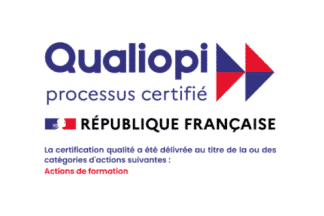What exactly is a Massive Open Online Course, or MOOC?
The Massive Open Online Course (MOOC) is a new educational format that consists in making online training open to all. MOOCs are generally provided free of charge.
Like a conventional e-learning course, a MOOC is a digital learning package presented by one or more professional speakers. However, unlike traditional distance learning courses limited to a set number of learners, MOOCs are open to anyone. In addition to a choice of online courses, learners have access to a range of interactive educational materials, such as videos or quizzes.
Note that a qualification or certification may be awarded, but this is often treated as an additional service, with a fee payable by the learner.
Key features of this training format.
Learners can freely access the content hosted on a MOOC platform, with no qualification requirements, and can interrupt their course whenever they want.
Another major benefit of MOOCs is the development of communities of learners who exchange resources and interact with each other or with the trainer(s) presenting the training modules.
Many training organizations offer free MOOCs on a range of subjects, including management and the social and human sciences.
Pros and cons of MOOCs
The limits of MOOCs
Some detractors of MOOCs criticize these learning tools for using poorly qualified human resources. However, not all MOOCs are run by inexperienced teachers.
Before registering for a MOOC, learners are strongly advised to check out the training center and trainers providing the course.
The other drawback with MOOCs is the high dropout rate. Because learners study independently with no support from trainers, many lose their motivation and fail to complete their course.
According to the founder of Unow, the first platform to have created French-language MOOCs, the completion rate (i.e. the percentage of learners who reached the end of their online course) is barely 10%!
Several solutions exist to tackle these problems. For example, several training organizations offer supplemental online tutoring, with a trainer assisting an individual or a small number of learners. Learners who receive this support and guidance are less likely to drop out of the course.
Another solution is to integrate MOOCs into a blended learning course that combines e-learning modules with face-to-face tuition.
Benefits of this learning approach
The strengths of MOOCs include their accessibility at no cost and their adaptability. Learners can easily follow these courses, wherever they are.
Last but not least, many MOOCs focus on narrow subject areas, allowing experienced trainees to build out their resume with specific new skills essential to their employability or career development.

